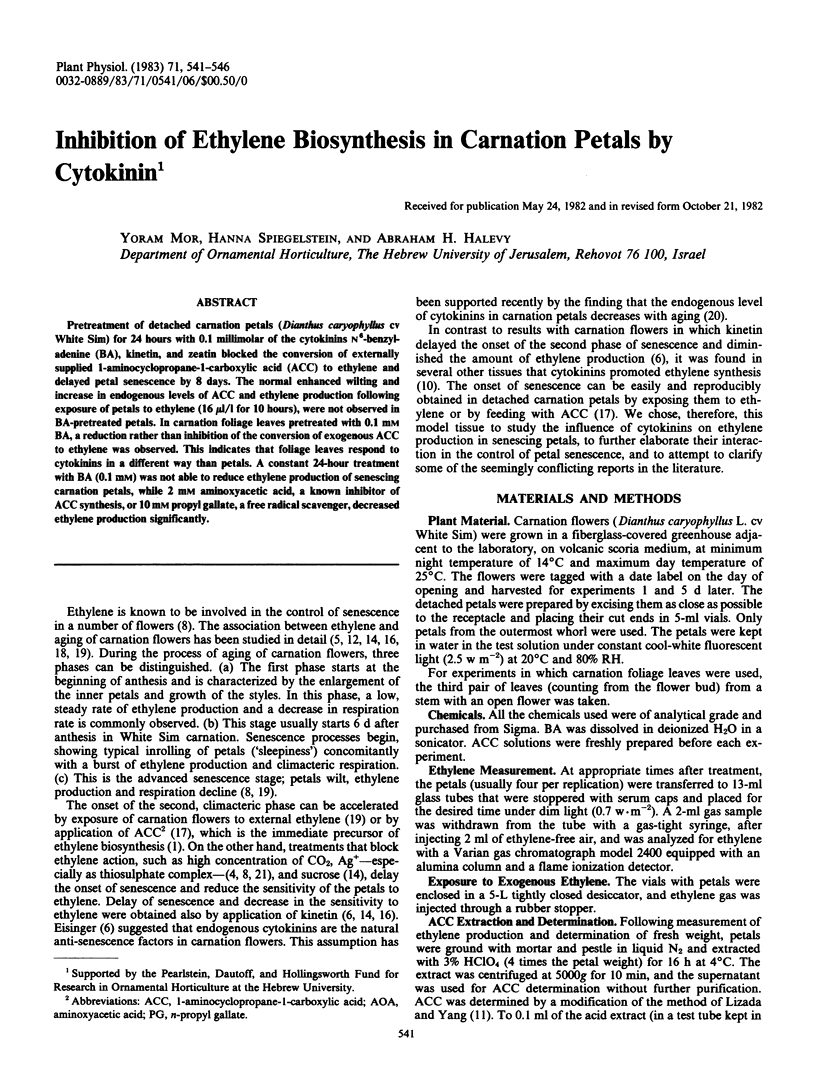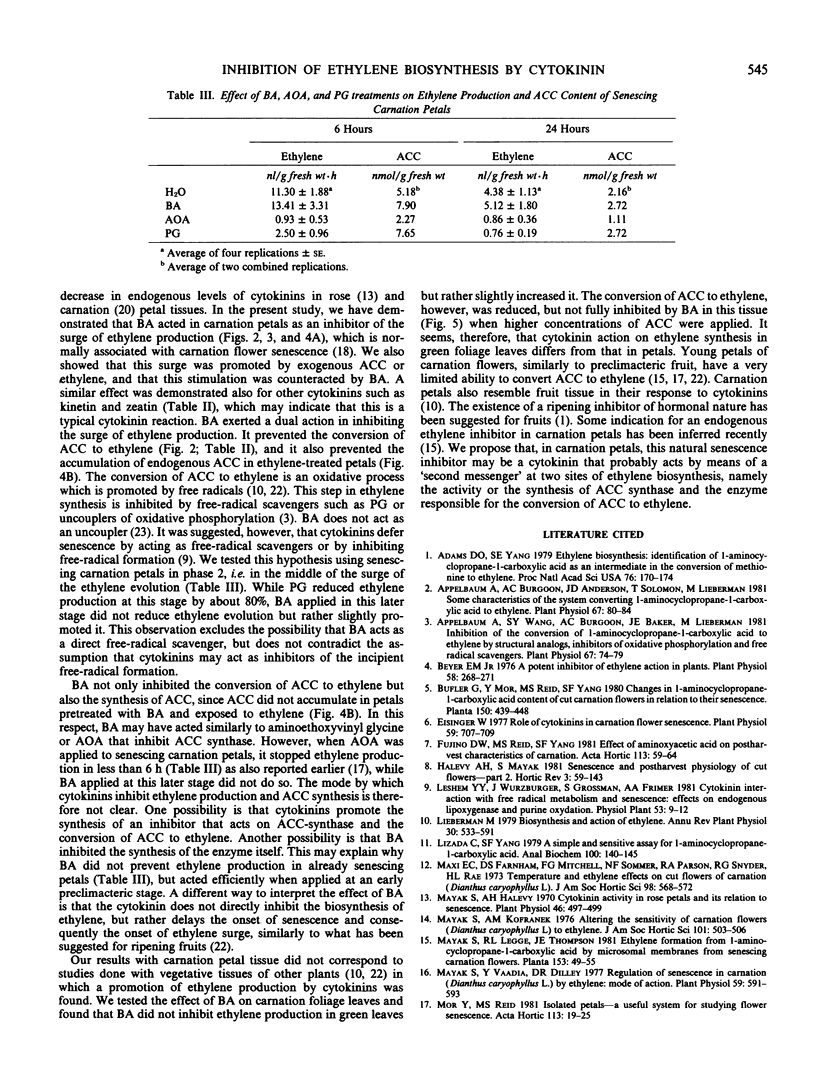Abstract
Pretreatment of detached carnation petals (Dianthus caryophyllus cv White Sim) for 24 hours with 0.1 millimolar of the cytokinins n6-benzyl-adenine (BA), kinetin, and zeatin blocked the conversion of externally supplied 1-aminocyclopropane-1-carboxylic acid (ACC) to ethylene and delayed petal senescence by 8 days. The normal enhanced wilting and increase in endogenous levels of ACC and ethylene production following exposure of petals to ethylene (16 μl/l for 10 hours), were not observed in BA-pretreated petals. In carnation foliage leaves pretreated with 0.1 mm BA, a reduction rather than inhibition of the conversion of exogenous ACC to ethylene was observed. This indicates that foliage leaves respond to cytokinins in a different way than petals. A constant 24-hour treatment with BA (0.1 mm) was not able to reduce ethylene production of senescing carnation petals, while 2 mm aminoxyacetic acid, a known inhibitor of ACC synthesis, or 10 mm propyl gallate, a free radical scavenger, decreased ethylene production significantly.
Full text
PDF





Selected References
These references are in PubMed. This may not be the complete list of references from this article.
- Adams D. O., Yang S. F. Ethylene biosynthesis: Identification of 1-aminocyclopropane-1-carboxylic acid as an intermediate in the conversion of methionine to ethylene. Proc Natl Acad Sci U S A. 1979 Jan;76(1):170–174. doi: 10.1073/pnas.76.1.170. [DOI] [PMC free article] [PubMed] [Google Scholar]
- Apelbaum A., Burgoon A. C., Anderson J. D., Solomos T., Lieberman M. Some Characteristics of the System Converting 1-Aminocyclopropane-1-carboxylic Acid to Ethylene. Plant Physiol. 1981 Jan;67(1):80–84. doi: 10.1104/pp.67.1.80. [DOI] [PMC free article] [PubMed] [Google Scholar]
- Apelbaum A., Wang S. Y., Burgoon A. C., Baker J. E., Lieberman M. Inhibition of the Conversion of 1-Aminocyclopropane-1-carboxylic Acid to Ethylene by Structural Analogs, Inhibitors of Electron Transfer, Uncouplers of Oxidative Phosphorylation, and Free Radical Scavengers. Plant Physiol. 1981 Jan;67(1):74–79. doi: 10.1104/pp.67.1.74. [DOI] [PMC free article] [PubMed] [Google Scholar]
- Beyer E. M. A potent inhibitor of ethylene action in plants. Plant Physiol. 1976 Sep;58(3):268–271. doi: 10.1104/pp.58.3.268. [DOI] [PMC free article] [PubMed] [Google Scholar]
- Eisinger W. Role of cytokinins in carnation flower senescence. Plant Physiol. 1977 Apr;59(4):707–709. doi: 10.1104/pp.59.4.707. [DOI] [PMC free article] [PubMed] [Google Scholar]
- Lizada M. C., Yang S. F. A simple and sensitive assay for 1-aminocyclopropane-1-carboxylic acid. Anal Biochem. 1979 Nov 15;100(1):140–145. doi: 10.1016/0003-2697(79)90123-4. [DOI] [PubMed] [Google Scholar]
- Mayak S., Halevy A. H. Cytokinin activity in rose petals and its relation to senescence. Plant Physiol. 1970 Oct;46(4):497–499. doi: 10.1104/pp.46.4.497. [DOI] [PMC free article] [PubMed] [Google Scholar]
- Mayak S., Vaadia Y., Dilley D. R. Regulation of Senescence in Carnation (Dianthus caryophyllus) by Ethylene: Mode of Action. Plant Physiol. 1977 Apr;59(4):591–593. doi: 10.1104/pp.59.4.591. [DOI] [PMC free article] [PubMed] [Google Scholar]


